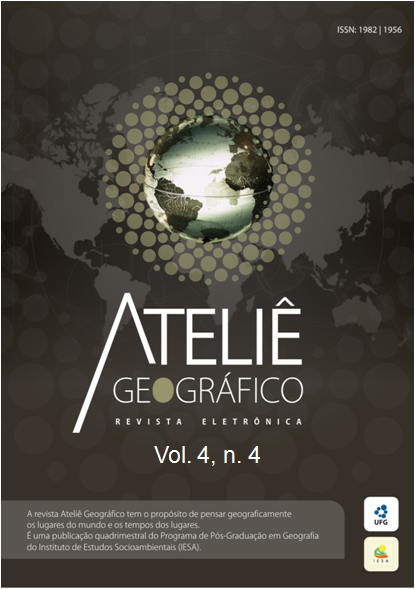CASES OF DENGUE IN THE CITY OF BARRA DO GARÇAS – MT
Abstract
The aim of this paper was to relate climatology data of average, maximum and minimum temperature, relative humidity of the air and precipitation, jointly with the number of clinical cases of classic dengue, transmitted by the Aedes aegypti from 2001 until 2009 years. The methodological procedures was based on three distinct steps being the 1st - step to obtain the meteorological data, 2 nd - step: the search data, provided by the Municipality Health Department - SMS / Center of Zoonosis Control - CCZ of Barra do Garças - MT and also the collect in the SINAN / DATASUS system. And the 3rd – step corresponds to the analysis and discussion of the theme. It was noted that the cases have occurred more frequently in the rainy season, with particular attention to the months of January, February and March. The years that showed the largest numbers of cases were: 2005 with 1.261 which is occupying the first place, in the second place is the year 2009 with 939; while the third place is the year 2004 with 926 and the fourth place with 881 confirmations were in 2008. The neighborhoods Jardim Pitaluga, Centro da Cidade, Campinas, Vila Maria, Vila Santo Antônio and São José, stand out with the highest rates of infestations. In conclusion it has relationships between the increase of dengue cases and raining season.
Downloads
Downloads
Published
How to Cite
Issue
Section
License
Autores que publicam nesta revista concordam com os seguintes termos:- Autores mantém os direitos autorais e concedem à revista o direito de primeira publicação, com o trabalho simultaneamente licenciado sob a Licença Creative Commons Attribution que permite o compartilhamento do trabalho com reconhecimento da autoria e publicação inicial nesta revista.
- Os autores não serão remunerados pela publicação de trabalhos na Revista Ateliê Geográfico. Além disso, os conteúdos publicados são de inteira e exclusiva responsabilidade de seus autores, ainda que reservado aos editores o direito de proceder a ajustes textuais e de adequação às normas da publicação.
- Autores têm permissão e são estimulados a divulgar seu trabalho online (ex.: em repositórios institucionais ou na sua página pessoal), já que isso pode gerar alterações produtivas, bem como aumentar o impacto e a citação do trabalho publicado (Veja O Efeito do Acesso Livre).


